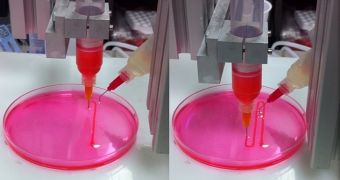We're still ages away from 3D printed organs, and 3D printed PCs might become reality sooner than them, but we've already seen various tissues being successfully produced through this technology, from stem cells or raw materials. Now, it's believed that 3D printing can be used to make organs that are better than the originals.
Well, “better” in the sense that they will produce electricity within the human body, making mankind independent of battery-based implants.
That's one of the main limitations of pacemakers, for example: they run on battery power, and when the energy is depleted, it's not a simple matter of just replacing the thing. After all, a pacemaker is located inside the body.
Thus, you basically need to go through surgery every time the energy is exhausted. Dr. Ibrahim Ozbolat, an engineering professor at University of Iowa, says that the ability to produce electricity is the solution.
It's fortunate that 3D bioprinting has already been employed for replacement skulls, hips and other bones. And that the implants were accepted by the organisms of the receiving patients.
Otherwise, Dr. Ozbolat would not have the groundwork needed to start exploring his concept of self-powered and electricity-producing body parts. He's literally proposing to enhance the human body via 3D printing.
Sure, he speaks as if he expects people with failed organs to be on the receiving end of his research, but how long will it be until perfectly healthy individuals go for the augmentations? Science fiction has never been more real, I suppose you could say.
According to Dr. Ozbolat, 3D printers will eventually be able to print tissues, organs and whole body parts directly onto the living human body. It will be decades before we see any of it of course, but he is confident that transplantable organs will be feasible in 10 years or so.
Dr. Ozbolat's current project is 3D printing an organ that acts as a pancreas and which can be transplanted into a type 1 diabetes patient. Usually found in children, this form of the disease means that the body cannot produce insulin, a hormone that is needed to convert sugar. The 3D printed organ would be able to regulate the glucose level in the blood, making drugs unnecessary.
The organ will have genetically modified cells, to “enhance their function” as it were. Hopefully, this gene meddling won't result in some other condition. Doubtless, many rats will suffer an early demise from being used in lab experiments before human trials are even considered.

 14 DAY TRIAL //
14 DAY TRIAL //